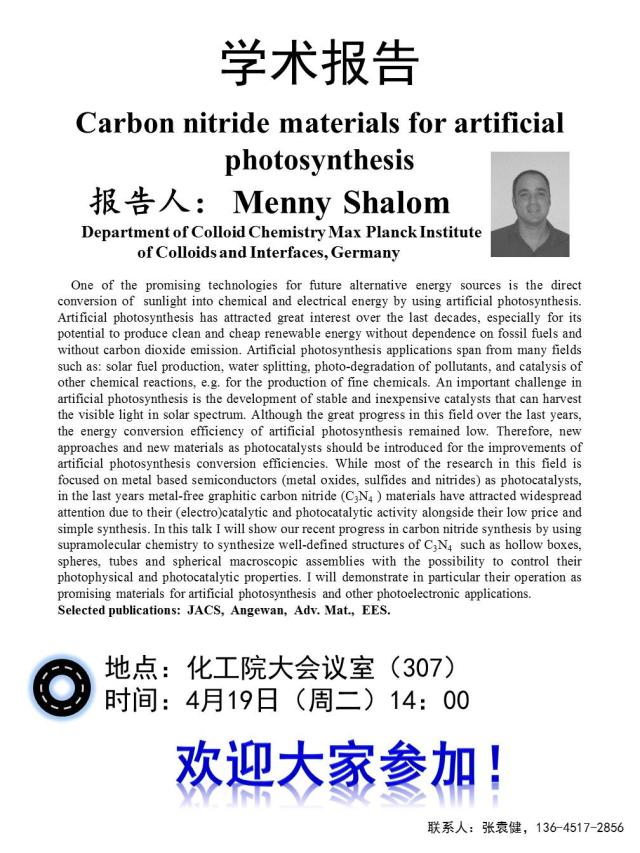题 目:Carbon nitride and nickel-based materials for artificial photosynthesis
主讲人:Dr. Menny Shalom (Group leader)
Max Planck Institute of Colloids and Interfaces, Germany
地 点:九龙湖校区化学化工学院老楼307大会议室
时 间:2016年4月19日(周二)下午14:00
报告内容:
One of the promising technologies for future alternative energy sources is the direct conversion of sunlight into chemical and electrical energy by using artificial photosynthesis. Artificial photosynthesis has attracted great interest over the last decades, especially for its potential to produce clean and cheap renewable energy without dependence on fossil fuels and without carbon dioxide emission. Artificial photosynthesis applications span from many fields such as: solar fuel production, water splitting, photo-degradation of pollutants, and catalysis of other chemical reactions, e.g. for the production of fine chemicals. An important challenge in artificial photosynthesis is the development of stable and inexpensive catalysts that can harvest the visible light in solar spectrum. Although the great progress in this field over the last years, the energy conversion efficiency of artificial photosynthesis remained low. Therefore, new approaches and new materials as photocatalysts should be introduced for the improvements of artificial photosynthesis conversion efficiencies. While most of the research in this field is focused on metal based semiconductors (metal oxides, sulfides and nitrides) as photocatalysts, in the last years metal-free graphitic carbon nitride (C3N4 ) materials have attracted widespread attention due to their (electro)catalytic and photocatalytic activity alongside their low price and simple synthesis. In this talk I will show our recent progress in carbon nitride synthesis by using supramolecular chemistry to synthesize well-defined structures of C3N4 such as hollow boxes, spheres, tubes and spherical macroscopic assemblies with the possibility to control their photophysical and photocatalytic properties. I will demonstrate in particular their operation as promising materials for artificial photosynthesis and other photoelectronic applications.
Selected publications: JACS, Angew., Adv. Mat., EES.


